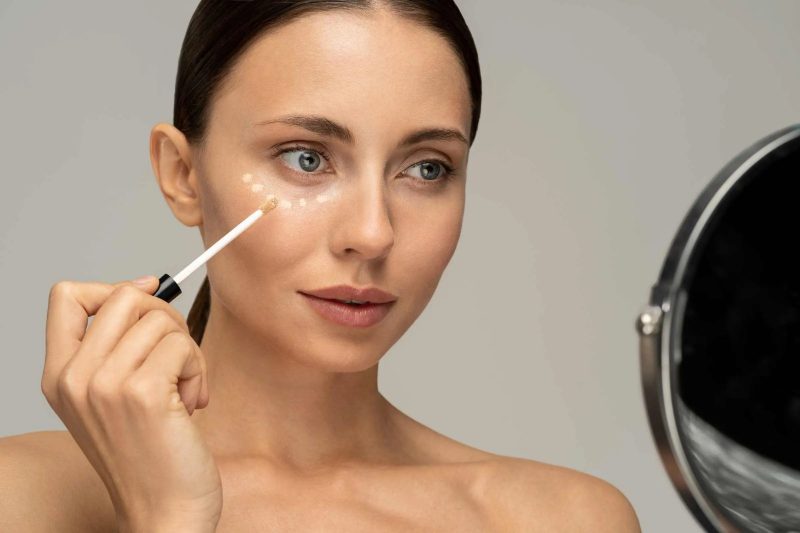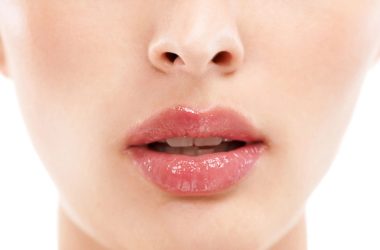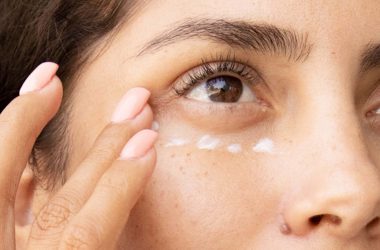A Complete Guide to Building a Seamless Base Using Natural Formulations from 100% PURE
Posted on April 23, 2025 Written by: 100% PURE®

Figuring out whether concealer or foundation comes first is comparable to the “what came first” question. Like the classic chicken or egg paradox, does foundation come before concealer? While one argues from a scientific perspective, we hail from a beauty-tific standpoint to help you achieve your desired looks.
As makeup’s most used products, many people use concealer and foundation almost interchangeably. However, whether you’re aiming for a natural finish or full glam, it’s essential to understand how and when to use foundation and concealer.
In concealer vs foundation, what’s the right way? This guide breaks down the key differences between concealer and foundation, when to apply each, and how to get the most out of both using clean, fruit-pigmented formulas. Riddle us this: Does foundation come before concealer?
Concealer vs Foundation: Understanding Their Role
Just like you wouldn’t use lip gloss as sunscreen or blush as foundation, coverage makeup, and each of your cosmetics has its unique role.
While some makeup can do double duty, when it comes to concealer vs foundation—or any beauty staple—applying them in the right order ensures that the products work best and can make them more effective overall.
Ready to find your perfect concealer and foundation combo, or the best foundation for older skin? Let’s dive into concealer vs foundation and their unique roles in a makeup routine.
Foundation:
If you’re looking for a second layer of flawless skin, foundation lays the groundwork for a flawless and radiant complexion. A well-applied foundation evens skin tone, minimizes imperfections, enhances the overall complexion, and more!
#1. Evens out skin tone and creates a uniform canvas. Foundation creates a smooth, even base for the rest of your makeup, serving as a canvas for your artistic expression. It’s applied all over your face to enhance your natural skin tone (we do that with the power of fruit pigments!) and give you the desired finish.
#2. Comes in a range of textures and coverage levels.
Various finishes of foundation range from full matte to dewy. Since the product covers more surface area, it determines the overall finish of our skin. Foundation also offers different levels of coverage, from sheer to full coverage. These options will be based on your skin type and concerns to guide you on choosing the best natural foundation for your skin.
100% PURE Options:
Fruit Pigmented® 2nd Skin Foundation: This ultralight serum foundation looks and feels like a second skin. Fruit pigmented® formula offers anti-aging benefits, medium-full coverage, and a satin finish, making it the best foundation for older skin.
Fruit Pigmented® Full Coverage Water Foundation: This hydrating, skin-evening foundation gives you flawless full coverage and a satin, slightly dewy finish for a naturally glowing complexion.
Fruit Pigmented® Cream Foundation: This nourishing cream foundation glides on effortlessly and blends seamlessly for a soft, natural-looking finish. Rich avocado butter pairs with rice powder to deliver a soft, satin finish, with buildable medium to full coverage, that lasts all day.
Fruit Pigmented® Powder Foundation: This silky, medium coverage powder is made with rice starch, fruit pigments, and avocado butter. This talc-free foundation powder contains anti-aging vitamins and antioxidants, plus it’s infused with skin-purifying eucalyptus to keep your complexion fresh all day.
Fruit Pigmented® Tinted Moisturizer: This mega hydrating natural foundation gives just enough coverage to perfect your complexion while feeling super light and refreshing. Organic white tea, acai oil, vitamins, and antioxidants deliver vital nutrients to your skin for a healthy glow.
Concealer:
A concealer is often slightly creamier, thicker, and more pigmented than a foundation. That makes it a great option for concealing dark eye circles, dark spots, acne scars, and blemishes. While foundation creates a flawless base, concealer is used for spot treatment on top of that.
Ready to find your perfect concealer to complement your ideal foundation? Let’s dive into the role of concealer and its unique place in a makeup routine.
#1. Targeted product to cover specific imperfections or discoloration. Concealers target specific imperfections and discoloration by using color theory to neutralize unwanted tones in the skin. Color-correcting concealers, often in shades like green, peach, yellow, or lavender, are designed to counteract specific issues like redness, dark circles, or sallow skin. Applying these corrective shades before foundation helps create a more even complexion.
#2. Often thicker and more pigmented than foundation. While foundation is meant for a full-face base, concealers are generally thicker and more pigmented than foundation because they are designed to be applied in specific areas for spot-correcting and providing extra coverage for imperfections.
100% PURE Options:
Fruit Pigmented® 2nd Skin Concealer: This creamy concealer offers medium to full coverage with a satin finish. Caffeine in ingredients like coffee beans and black tea leaves helps to increase circulation, therefore reducing dark circles around the eyes.
Fruit Pigmented® Long Last Concealer with Super Fruits: The superfruit-infused formula brightens the under-eye area while seamlessly blending into skin. It conceals imperfections and provides opaque, full coverage that lasts all day.
2nd Skin Corrector: This ultra-blendable color corrector is made with hydrating olive squalane and natural pigments to banish redness, brighten your complexion, and correct dark circles.

Foundation First: The Classic Method
As for the riddle, does the foundation come before concealer? We’ll call this the tried and true or classic method of makeup application. Applying foundation first provides initial coverage, then concealer can spot-correct any remaining imperfections or discoloration.
Using foundation first helps you achieve a more even and natural-looking complexion – and more!
#1. Apply foundation before concealer to reduce product usage.
Foundation provides initial coverage, allowing you to see what imperfections still need addressing, and then concealer can be applied specifically where needed. By providing some initial coverage, a foundation can minimize the amount of concealer, thus reducing product usage.
#2. Helps avoid layering too much product in areas that don’t need it.
Foundation helps avoid layering too much product by allowing you to build coverage strategically. By starting with a thin layer and adding more as needed, you can achieve a natural, even base without excessive product buildup in areas that don’t require it.
#3. Works well with medium to full coverage foundations.
Applying foundation before concealer with medium to full coverage works well because it creates an even base, reducing the need for extensive concealer use and preventing a cakey look.
#4. Best for evening out tone first, then spot-concealing.
Foundation helps to even out skin tone and reduce the appearance of redness or discoloration. It helps to color correct the entire face, while concealer can be applied strategically to spot-treat imperfections.
Ideal when using Fruit Pigmented® 2nd Skin Foundation or Full Coverage Water Foundation.
Concealer First: The Strategic Option
Back to our original ‘which came first’ question, now we have the concealer before foundation strategy. We’ll call this the strategic option of makeup application. Applying concealer first is a good method for addressing specific skin concerns like hyperpigmentation, darkness, and more!
#1. Useful for color-correcting (green, peach, etc.).
Concealers target specific imperfections and are useful for color-correcting areas or neutralizing unwanted tones in the skin. Color-correcting concealers come in different shades designed for specific skin concerns:
Green: Used to neutralize redness from acne, sunburn, or rosacea.
Peach or Orange: Used for dark circles, as they help to counteract the blueish-purple tones under the eyes.
Yellow: Used for dark circles and to brighten sallow or dull skin.
Lavender or Purple: Used to brighten dull or sallow skin, especially on darker skin tones.
#2. Ideal when using sheer foundations or tinted moisturizers.
Applying concealer before foundation is ideal when using sheer foundations or tinted moisturizers. These products blend in more with the skin to care for and color correct the complexion, reducing the amount of concealer coverage needed.
#3. Great for spot-correcting prominent discoloration.
Applying concealer first provides initial coverage, then concealer can spot-correct any remaining imperfections or discoloration.
Best for minimal looks using Fruit Pigmented® Tinted Moisturizer or 2nd Skin Corrector.
When to Use Both Concealer and Foundation
We discussed earlier that you wouldn’t use lip gloss all over your face as sunscreen since each has specific roles. The same is true for concealer vs foundation! Both foundation and concealer play distinct roles in creating the most natural coverage and finish.
Let’s dive into some of these circumstances when to use both concealer and foundation.
#1. You have both widespread uneven tone and targeted blemishes.
Using both foundation and concealer is beneficial when dealing with a large area of uneven skin tone and targeted blemishes because foundation provides an even base layer for a more uniform look, while concealer offers more concentrated coverage for specific imperfections.
#2. You’re going for a dimensional, long-wearing look.
Using both concealer and foundation together helps create a dimensional, long-wearing makeup look by targeting different needs like highlighting certain areas, and adding depth and lift for a more sculpted look.
Concealer, especially when applied in a shade lighter than your foundation, can brighten areas like under the eyes, forehead, and chin, creating a more sculpted and dimensional appearance. Moreover, the contrast between a darker foundation and a lighter concealer adds dimension, giving the skin a sculpted look
#3. Events, photography, or professional settings where an enhanced complexion is preferred.
When used together, foundation and concealer work synergistically to create a more polished and flawless-looking complexion, suitable for events, photography, or professional settings where a refined look is desired. A polished look will also photograph better.
Try pairing 2nd Skin Foundation + Long Last Concealer for a buildable, layered effect.
When to Use One Instead of Both
One of the beauties and many benefits of concealer vs foundation is their ability to complement each other for various looks, from polished makeup or full glam to a more natural, your-skin-but-better look. Let’s explore some of these instances when to use concealer instead of foundation and vice versa.
Use only a foundation if:
#1. Skin is clear and needs minimal correction.
You might only need foundation if you’re one of the lucky individuals who won the genetic or skin lottery. Using foundation when your skin is already clear and requires minimal correction is a matter of preference and personal style.
#2. You’re in a rush or going for a natural look.
We all have those days when we’re in a rush and there’s no time for a full face of makeup. That’s okay! Foundation can save time and the day for quickly evening out your skin tone when you’re short on time or want a natural look.
Use only concealer if:
#1, You want a “no-makeup makeup” look.
You can definitely achieve a “no-makeup makeup” look using only concealer. Concealer is designed for targeted coverage, making it ideal for a natural look without the need for full foundation.
#2. You’re correcting under-eyes or a few spots only.
If you have a few spots or imperfections to cover, concealer can correct these areas, like brightening areas under the eyes, creating a more awake and refreshed appearance.

How Formulas Affect Application Order
Need a cheat sheet for matching your base products? We’ve rounded up our collection of foundation formulas with concealer formulas and how they would be applied for the best application.
For a seamless finish, add a primer. So, what does primer do? It creates a smooth, even canvas for makeup application, enhancing its longevity and helping it blend seamlessly.
Using a cosmetic sponge can also enhance the overall makeup look and help the products blend seamlessly, and it’s perfect for applying both cream and liquid formulas!
Water-based foundation + water-based concealer: Foundation first.
When using water-based foundation and concealer, apply them in a similar order to how you’d apply any makeup: primer, foundation, then concealer. Since both products are water-based, they should be compatible and won’t cause pilling or separation. Applying concealer after foundation allows you to target specific areas for extra coverage or blending.
Silicone-based + silicone-based: Flexible order.
Although the order can be flexible, when layering silicone-based products, the application order typically involves starting with a silicone-based primer and then applying a silicone-based foundation. This “like with like” approach helps create a smooth, long-lasting base and prevents pilling. Silicone primers can create a barrier that, when paired with a silicone foundation, can enhance the makeup’s texture and longevity.
Powder foundation + cream concealer: Concealer first.
When pairing a powder foundation with a cream concealer, applying the cream concealer first is generally recommended to avoid a cakey or uneven finish. This helps create a smoother base for the powder foundation and prevents pilling or patchiness.
Skin Type Tips
A skin type is just another way of classifying the behavior we can expect to see on our skin’s surface. The biggest factor in determining skin type is whether we experience oiliness. And when we cater our makeup to our skin type, that’s when we start seeing quality makeup results in even the most trying conditions (looking at you, summer heat wave).
Oily skin:
For oily skin, using foundation first to control shine and set the base involves a strategic approach that includes a mattifying primer, a matte finish foundation, and setting powder. These steps create a barrier, absorb oil, and minimize shine, resulting in a longer-lasting, flawless makeup application.
Dry skin:
For dry skin, using hydrating formulas in foundation and a flexible order of application helps to combat dryness and create a smooth, flawless makeup look. Hydrating formulas provide moisture, while flexible application allows for products to be layered in a way that best suits the skin’s needs.
Sensitive skin:
For sensitive skin, focusing on concealer alone is best as foundationless layering can be a great alternative. Instead of applying foundation, use concealer to target specific areas of concern, like blemishes or dark circles, and then blend it in gently. This minimizes the product on the skin and can be less irritating.
Pro Techniques for Each Method
Layer-and-Blend (Foundation First):
To achieve a flawless, pro-level makeup look with a “layer-and-blend” approach, prioritize foundation application first. Start with a clean, prepped canvas, apply a primer, then a thin layer of foundation, and blend it. If more coverage is needed, add another thin layer and blend again. This builds up the foundation without appearing cakey.
Primer: Apply a primer to create a smooth, even surface for foundation.
Foundation: Apply a thin layer of foundation, and blend it with a damp cosmetic sponge or brush.
Concealer: Once you have a base layer of foundation, you can more effectively target specific areas, like under-eye circles or blemishes, with concealer.
Blend with cosmetic sponge: Create a more natural, airbrushed finish by blending the makeup with a cosmetic sponge.
Set with powder: Setting powder sets makeup by absorbing excess oil and creating a smooth, matte finish, which helps to prevent creasing, fading, and shine throughout the day. It also helps to lock in your foundation and other makeup products, extending their wear time.
Spot-and-Diffuse (Concealer First):
To achieve a flawless, pro-level makeup look with a “spot-and-diffuse” approach, prioritize concealer application first. Start with a clean, prepped canvas, apply a primer, then concealer to imperfections, and blend it. If more coverage is needed, add another thin layer and blend again.
Primer: Apply a primer to create a smooth, even surface for concealer.
Apply concealer and blend: Once you have any imperfections covered by a concealer, you can more effectively target specific areas, like under-eye circles or blemishes, with concealer.
Light layer of tinted moisturizer: A light layer of tinted moisturizer is a good choice for a natural-looking, sheer coverage makeup look, providing hydration and a touch of color without a heavy, cakey feel. It’s ideal for everyday use, offering a way to even out skin tone and provide a dewy finish, especially for those with normal to dry skin or as the best foundation for older skin.
Add touch-ups as needed: Adding a concealer for touch-ups throughout the day is ideal, especially for areas like under-eye circles, blemishes, or areas where coverage has faded. It allows you to refresh your base, address imperfections, and brighten the complexion without reapplying foundation.
Conclusion
Remember, there’s no one-size-fits-all rule when it comes to concealer vs foundation. The key is to understand your skin’s needs, product textures, and desired outcome. Whether you’re layering or spot-correcting, 100% PURE offers natural, skin-loving options to help you build a flawless base with confidence.
So, riddle us this: Does foundation come before concealer? The truth is, there isn’t a right or wrong when it comes to makeup. There are some best practices, or tips and tricks that you can use to ensure the best possible makeup result. It all depends on you and whether the concealer or foundation comes first.
Frequently Asked Questions (FAQs)
Which is better for mature skin—concealer or foundation?
For the best foundation for older skin, foundation is generally preferred over concealer as a base, followed by concealer to target specific areas. Foundation provides a more even base, while concealer can be used to address specific areas like hyperpigmentation or under-eye darkness.
Should I apply primer before or after concealer/foundation?
You should apply primer before foundation and concealer. Primer is a makeup product applied after moisturizer and before foundation to create a smoother, more even base for makeup. It helps fill in pores, minimize fine lines, and make foundation and concealer last longer.
What does primer do, and is it necessary with natural products?
Makeup primer’s main function is to prepare the skin for makeup application, creating a smoother and more even base. It can help minimize pores, control shine, and make makeup last longer. While not always necessary, primer can be beneficial, especially for those with oily or textured skin or those who want a flawless, long-lasting makeup look.
Can I use a cosmetic sponge with cream foundation?
You can definitely use a cosmetic sponge with cream foundation! In fact, sponges are often preferred for applying cream foundations, as they can help achieve a natural, dewy finish and even application.
What’s the best foundation for older skin with dry patches?
Hello hydration – this key element will be your ace in the hole for using foundation makeup on mature skin. Look for terms like ‘hydrating’ and ‘radiant’ as you’re shopping for products. You’ll also want to stick to liquid and cream formulas that are as lightweight and as buildable as possible.









